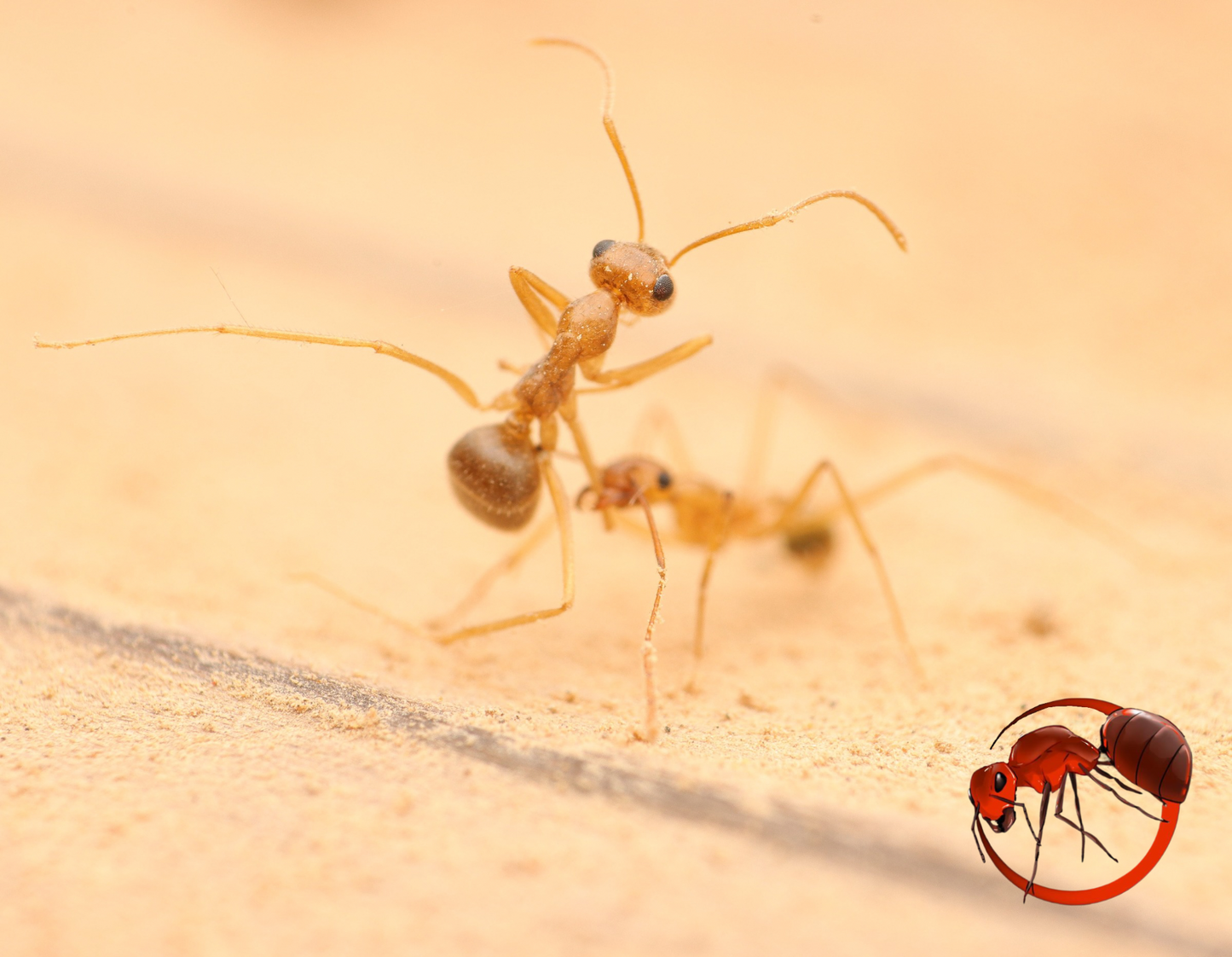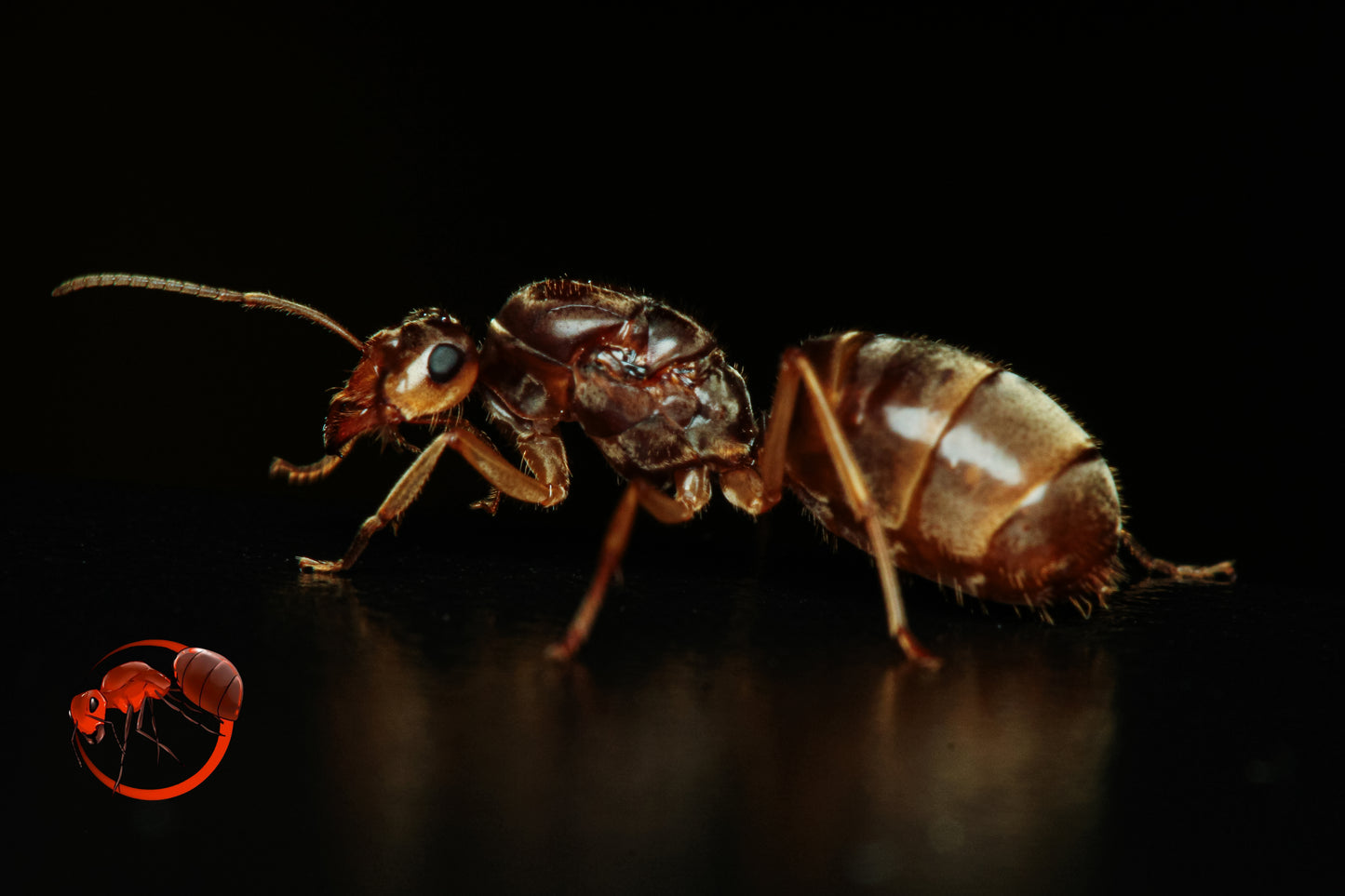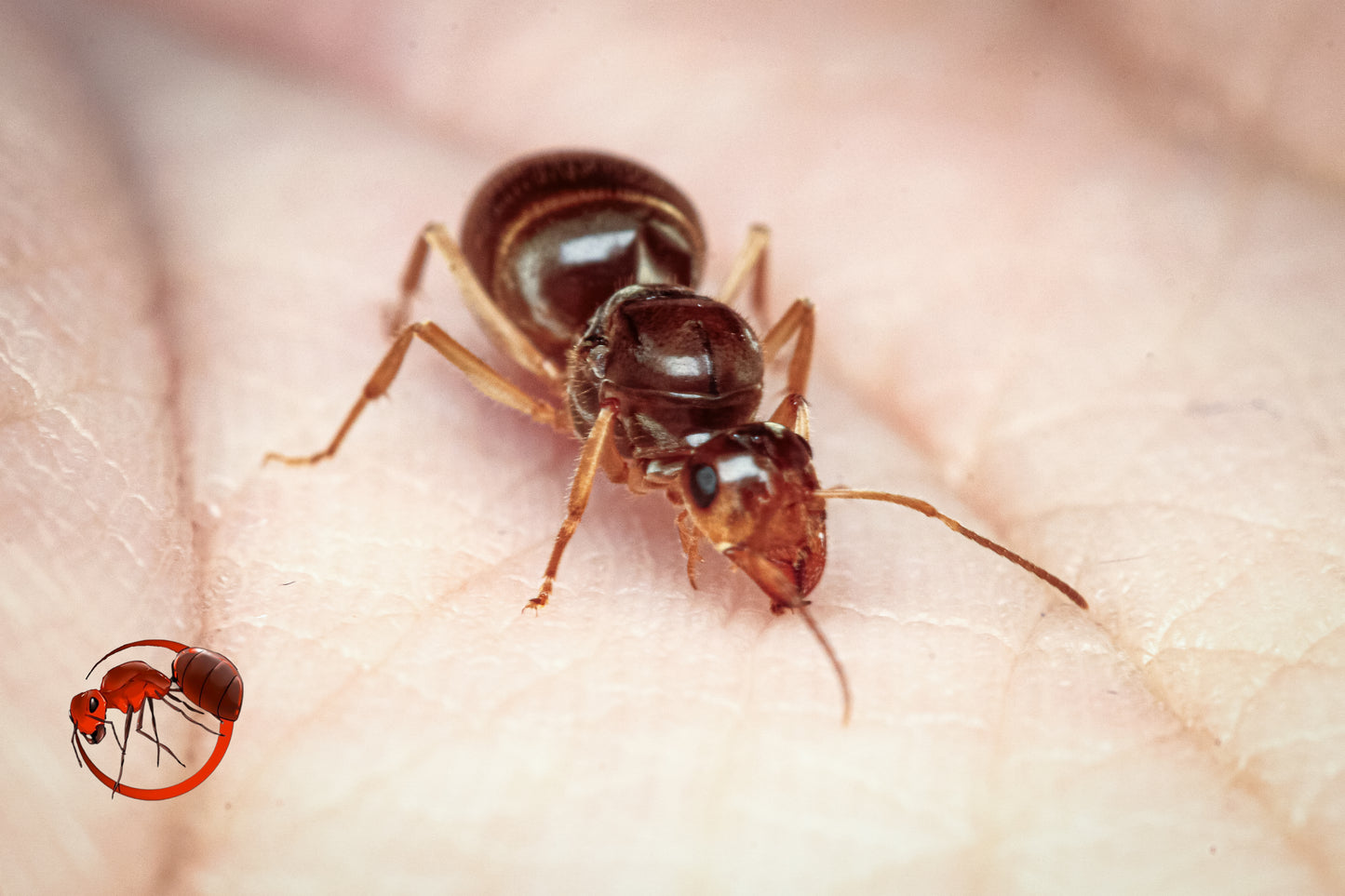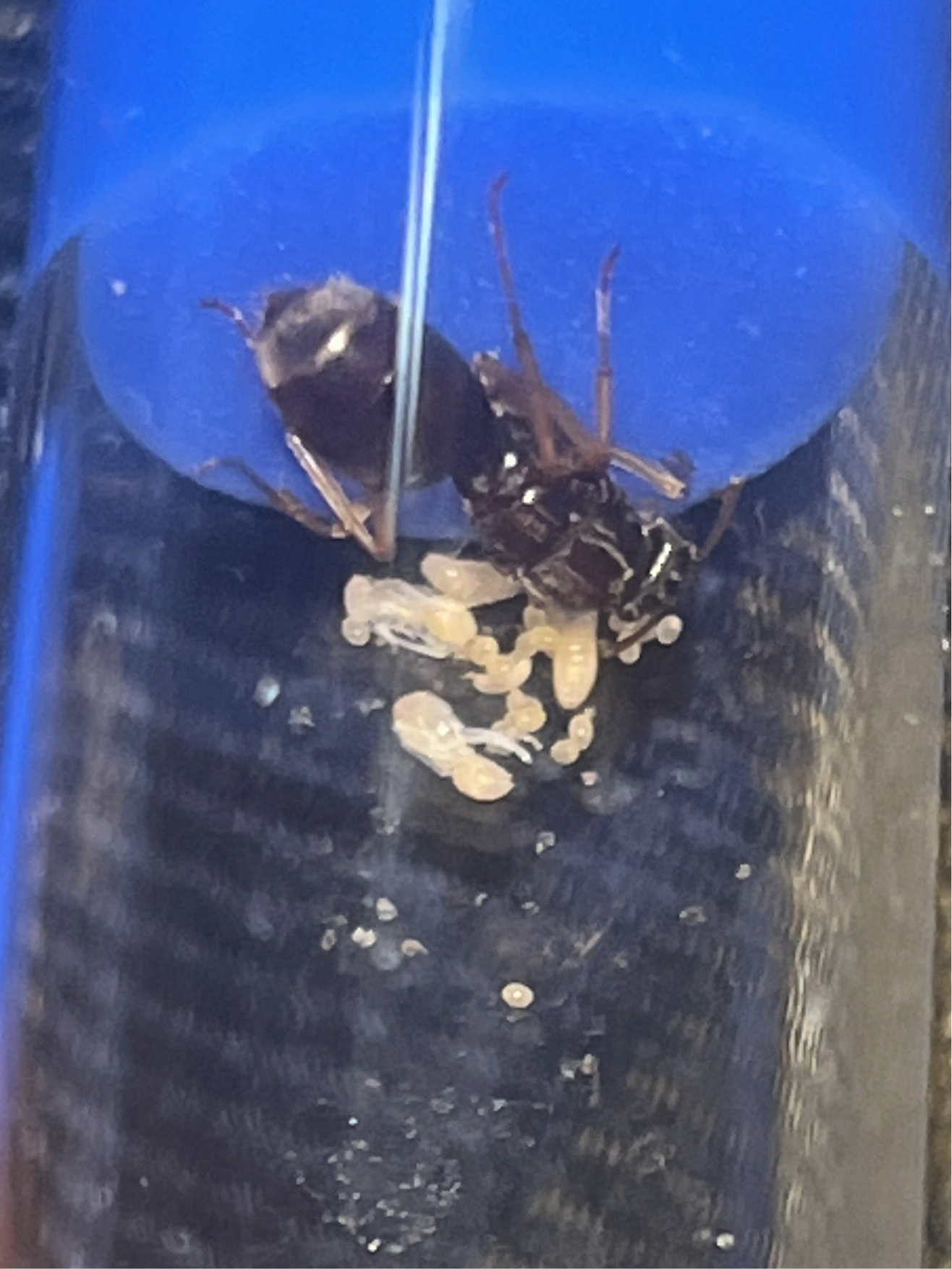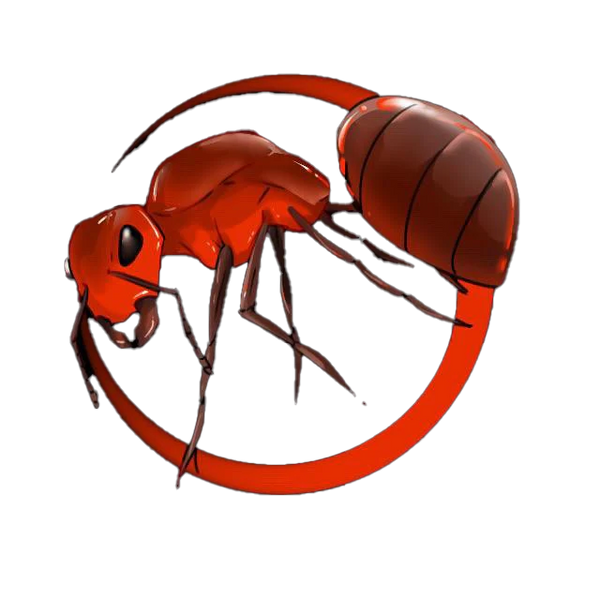Formistudio
Myrmecocystus testaceus (Honey Pot Ants)
Myrmecocystus testaceus (Honey Pot Ants)
Couldn't load pickup availability
Myrmecocystus testaceus (Honey Pot Ants) for sale!
Yes, these ants create repletes; special workers that are made to store large amounts of liquids or protein by stretching their abdomen to maximize food capacity.
A very uncommon species of ant that we will stock and probably one of the coolest. Myrmecocystus testaceus (Honey Pot Ants) are the only legal species of honey pot ant that can be obtained in Canada for sale at the moment, they were recorded as native ants in British Columbia quite a while ago but unfortunately haven't been seen since due to habitat loss and invasive species of ants displacing them. Hence, we have imported them legally from places in which they are abundant, such as: California, Oregon, Washington, etc.
The populations we have for sale are likely going to be from Southern California where these ants do NOT need hibernation (proper term: diapause).
Queens are yellowish brown and are approximately ~12mm in length, while the regular workers are around ~7mm; workers are a beautiful yellow colour. The repletes of this species can get around 4-5 times larger than the workers, and it's important to note that they need a wall or ceiling to hang on (preferably the formicarium has access to sand and the interior is sprinkled with sand). Without it, the repletes will die.
Care guide:
Please follow this care guide to ensure the best possible chances of rearing a colony!
Food
Generally, any feeder insect on our shop will work, although for smaller colonies, we recommend that you get peanut beetles to accommodate their size; as the colony grows, they will be open to accept a wider variety of food.
Liquid sugars should always be available in the form of liquid feeders or consistent feeding (make sure the ants are never deprived of carbohydrates)
As a rule of thumb, protein should be fed twice every week, and sugars should almost always be available; scale up the amount of food given as the colony grows.
Temperature/Humidity
During the founding stage (from a single queen up to a dozen or so workers), they should be kept in a test tube as it already provides the humidity needed. In a formicarium, a humidity gradient ranging from very damp to dry is necessary to satisfy all brood stages (eggs, larvae, and pupae; eggs and larvae prefer a higher humidity while pupae thrive in drier hot environments.)
Temperature-wise, these honey pot ants should be kept at 26-30C as a gradient to ensure that ants can choose what temperatures they prefer. (A HEATING CABLE OR PAD IS REQUIRED)
Ant Nest
We are currently working on a specialized nest for this species of ant, which we plan to release around April. Nests should be able to keep a consistent gradient they prefer; they should also have an overhead (textured with sand or plaster) that the repletes can hang on.
When choosing the size of the formicarium, the colony should take up at least 40%+ of the nest capacity to ensure the colony doesn't feel vulnerable and stressed.
Guarantee (If purchased with queen):
1. What’s Covered:
- Queen Survival: If the queen dies within one year, we’ll provide a replacement queen.
- Full Year Guarantee: The guarantee is valid for one year from the date of purchase, as long as the buyer follows the care guide precisely.
2. Buyer Responsibilities:
- To ensure the guarantee remains valid, you must follow the care instructions in the provided Myrmecocystus testaceus Care Guide.
- Water MUST always be available.
- There should not be any brightly coloured or fuzzy moulds in the setup (usually caused by uneaten food).
- This guarantee doesn't apply if queen is killed (either purposely or accident: handling, improper feeding, nest moving, etc.)
3. How to Make a Claim:
If the queen dies and you’ve followed the care instructions precisely, here’s what to do:
-
Document the Condition: Provide clear photos of the queen’s condition and the setup, showing adherence to the care guidelines.
-
Care Log: Submit a short log or summary of how you’ve cared for the queen, including feeding and environmental conditions.
-
Contact Us: Reach out within 12 months of purchase to initiate the replacement process.
Important Terms:
-
The guarantee is non-transferable and applies only to the original purchaser.
-
The buyer must maintain proper documentation of the setup, feeding, and environment to qualify for a replacement.
-
Any deviation from the provided care guidelines or neglect in following instructions will void the guarantee.
Share
